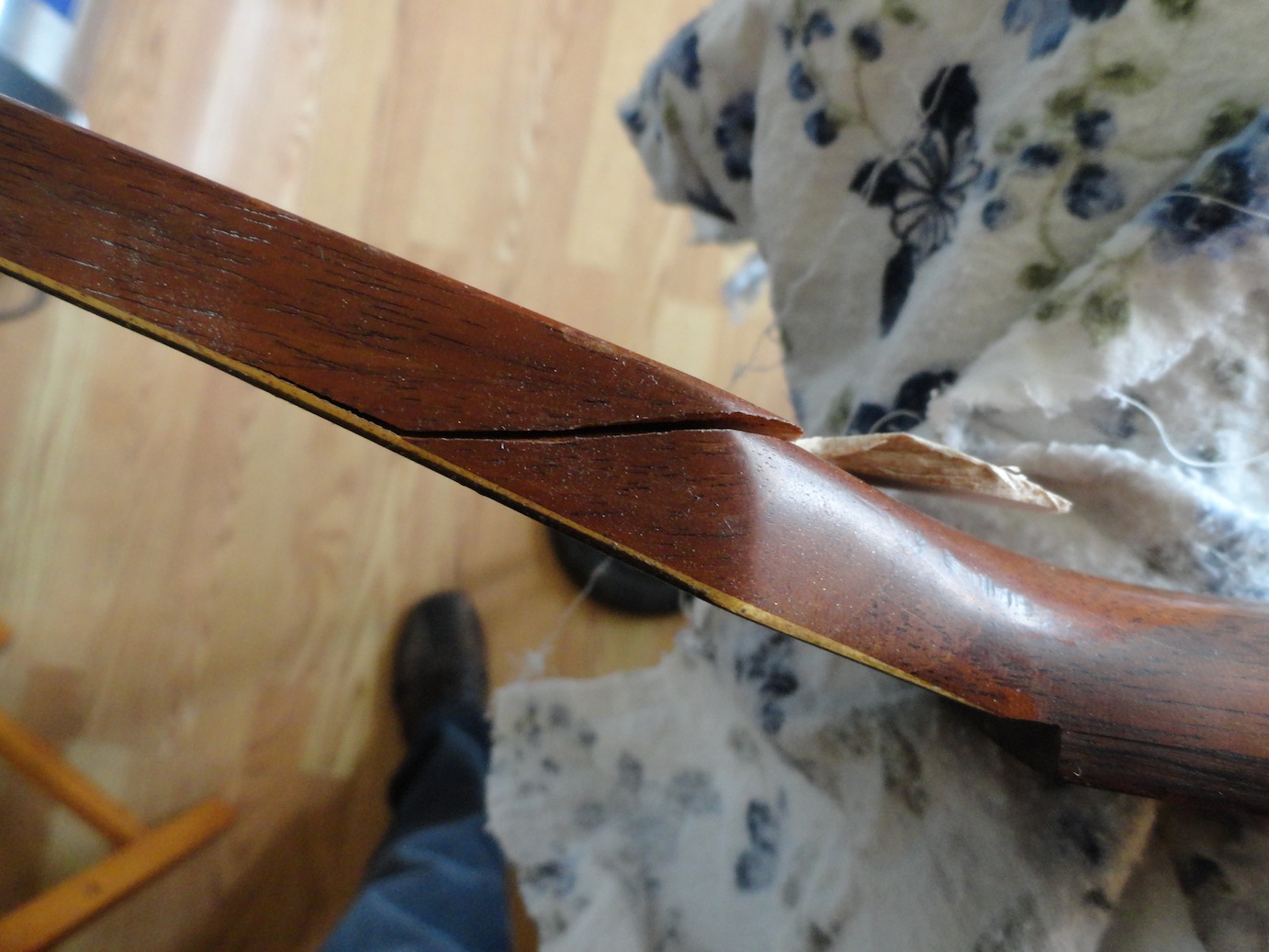- Details
- Hits: 21997
Serious repairs
For up to date pictures of serious repairs and restorations, visit the Facebook page, it's updated several times a week with the latest jobs from the shop. You don't have to have a Facebook profile to view the page.
Every now and then, a guitar, bass, banjo or mandolin will need some more serious work. As this guitar did, and the Les Paul that had a broken headstock (pictures below). It camt to me with a split, unglued bridge, worn out frets and a broken headstock. It's owner loved this guitar very much. So, even though it was not made by a prestigious brand, and a new one was about the same price as the repairs, it's owner wanted it back in playing condition. Sometimes, repairs are even tougher. See here how I fixed a broken truss rod on a 1969 Gibson EBO-L.
I don't care what brand your guitar is. If it's the guitar that maked you happy, and you want it fixed, I will do the work for you.


 The frets on the first guitar were worn our from years of use. The notches in the frets were so deep, that I couldn't salvage the frets by levelling them and re-crowning them. I had to replace them. When replacing frets, you have to consider either replacing only the ones that have to be replaced, or replacing all the frets. I will always advocate for replacing them all, as it allows you to level the fingerboard (see bellow) and have a consistens fret job throughout the playing surface.
The frets on the first guitar were worn our from years of use. The notches in the frets were so deep, that I couldn't salvage the frets by levelling them and re-crowning them. I had to replace them. When replacing frets, you have to consider either replacing only the ones that have to be replaced, or replacing all the frets. I will always advocate for replacing them all, as it allows you to level the fingerboard (see bellow) and have a consistens fret job throughout the playing surface.

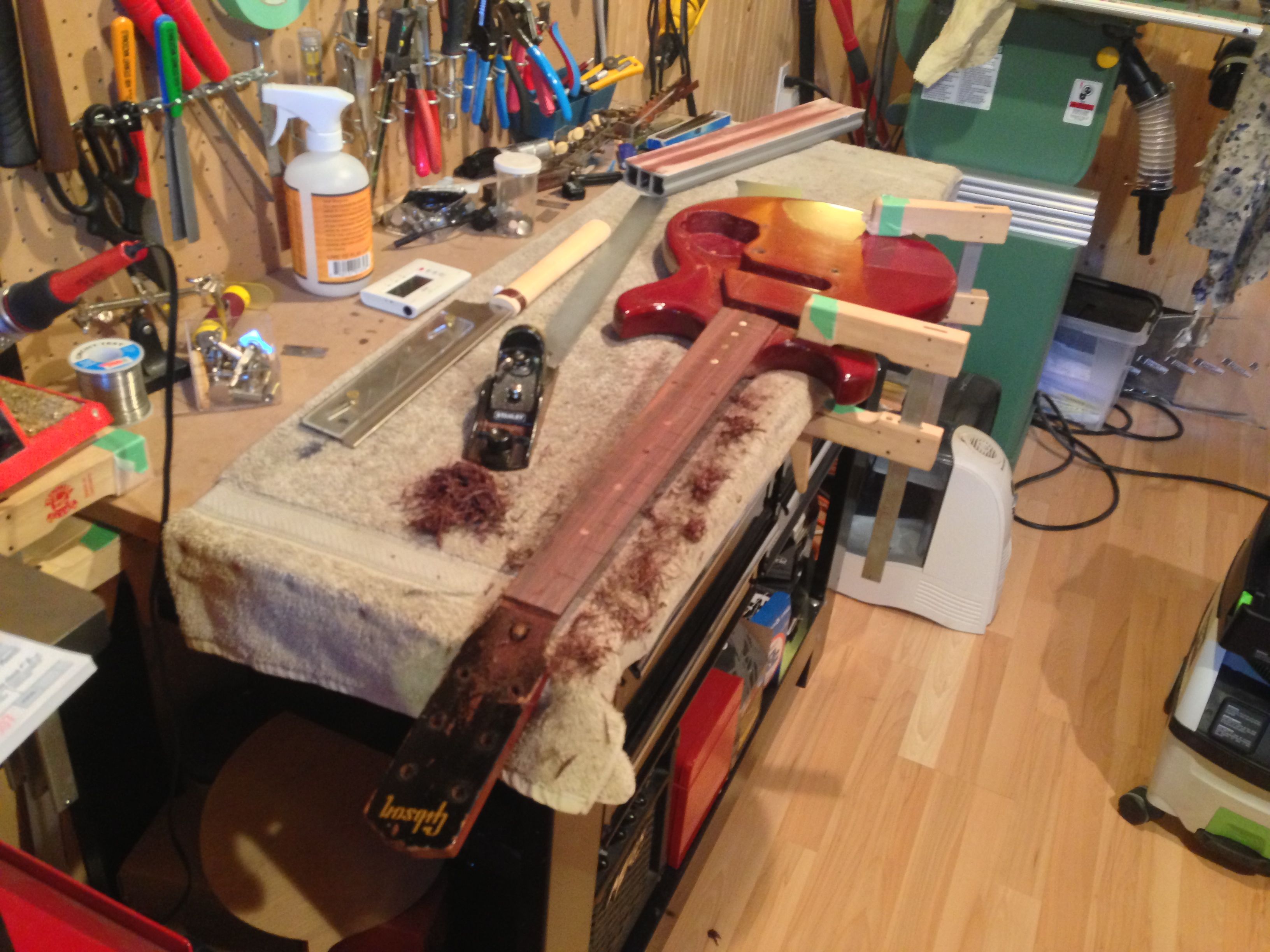
Here, I'm lavelling the fingerboards. I start out with a block plane, then radiused sanding block, followed by a machined straight edge.
As the years go by, you wil also need to have the bridge re-glued. Because there is a very high probability that it will come un-done. This same guitar also had this problem. Some guitars will need a neck reset, which is a complex operation reserved for treasured or valuable instruments. Pictures of this operation can also be seen bellow. This process involves removing the neck from the guitar, re-shapping it's heel for the new, appropriate angle, and finally reinstalling it.
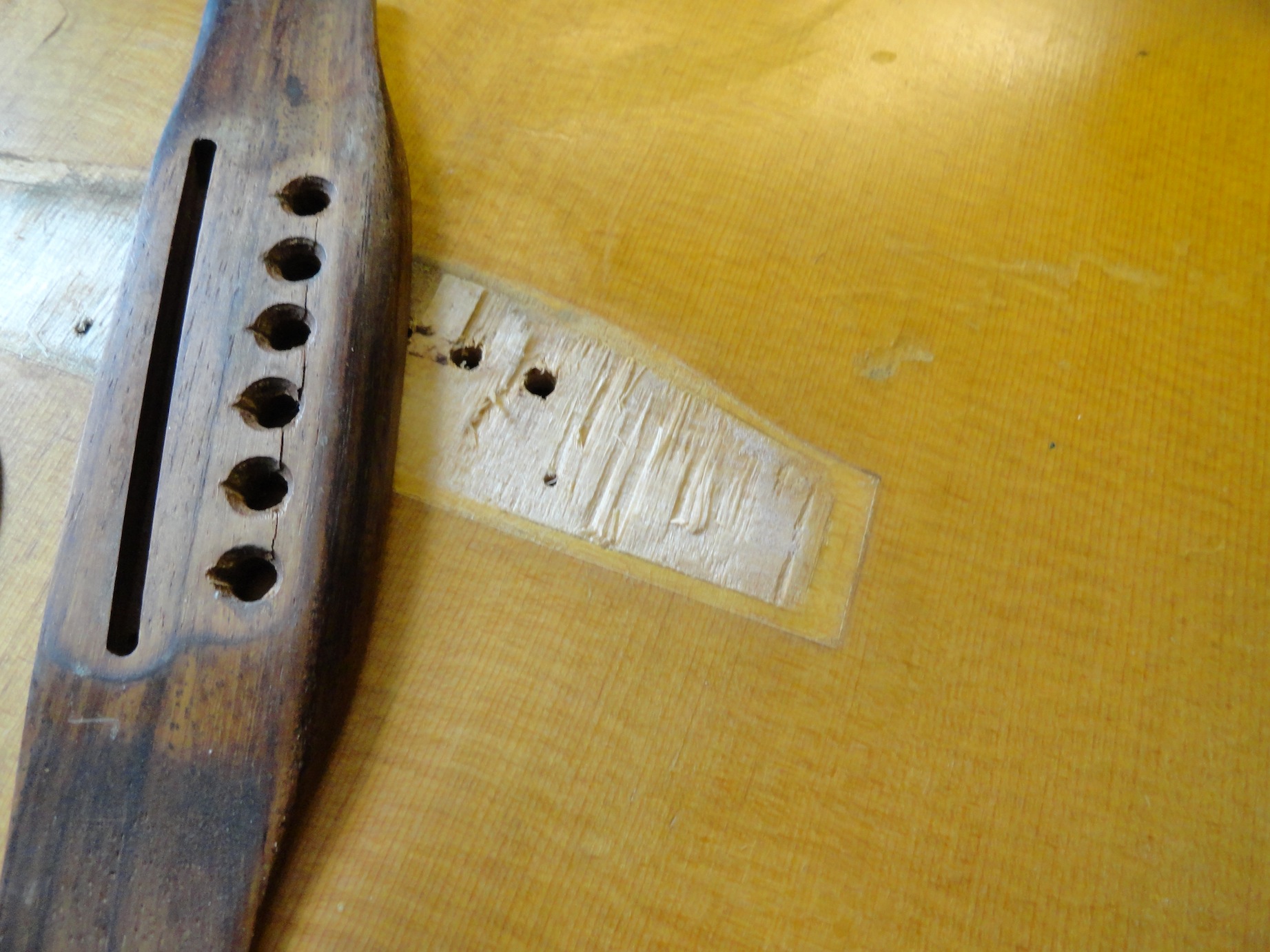


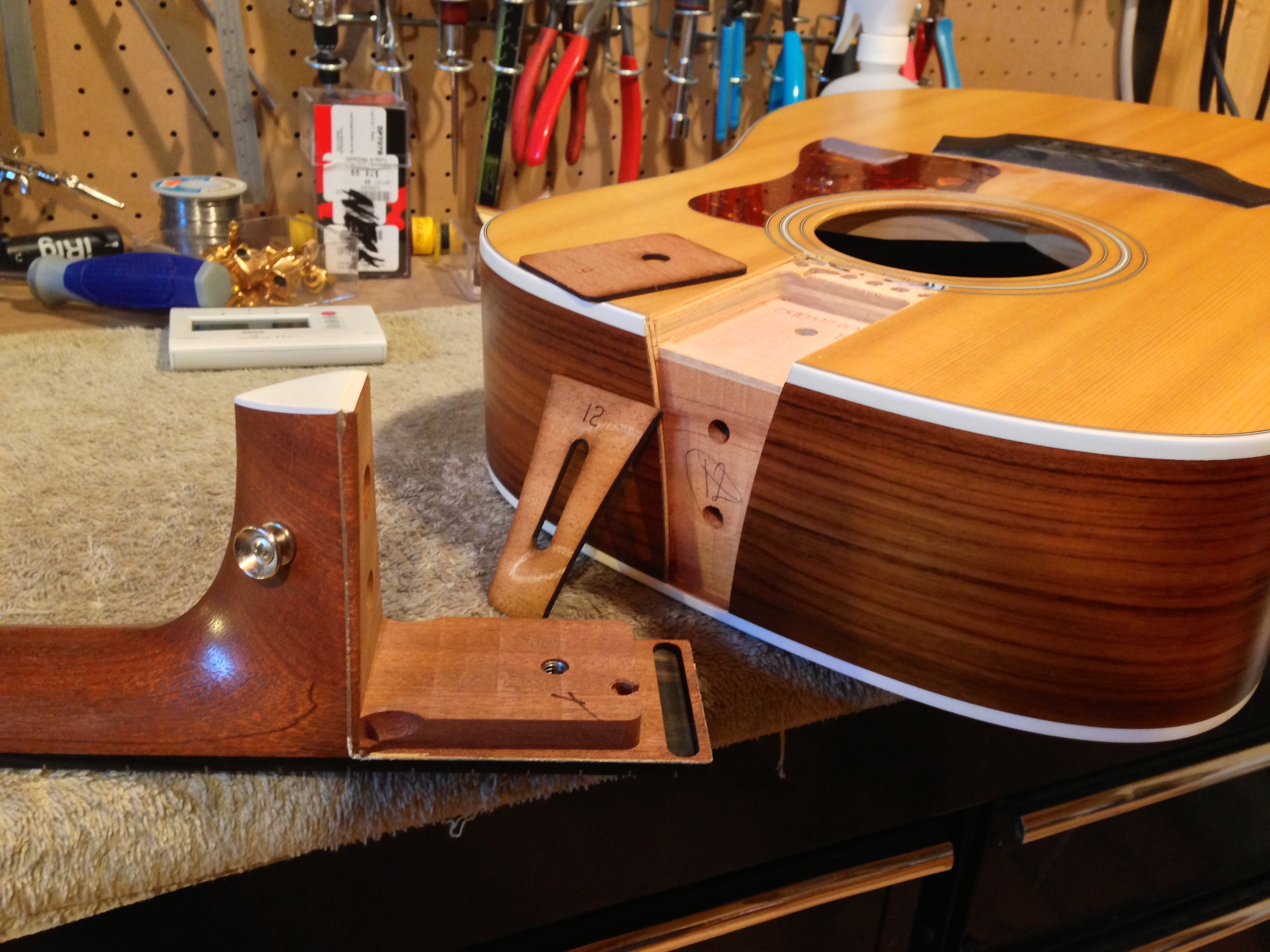
When re-glueing a bridge, it has to be completely removed, the surfaces prepared, and finally reglued. If you only pack the crack with glue and then clamp it down, it will come undone as soon as tension is re-applied to the bridge. This happens because the glue is seeping n between two surfaces with old adhesive on them, and wood glue needs.... wood, in order to stick.
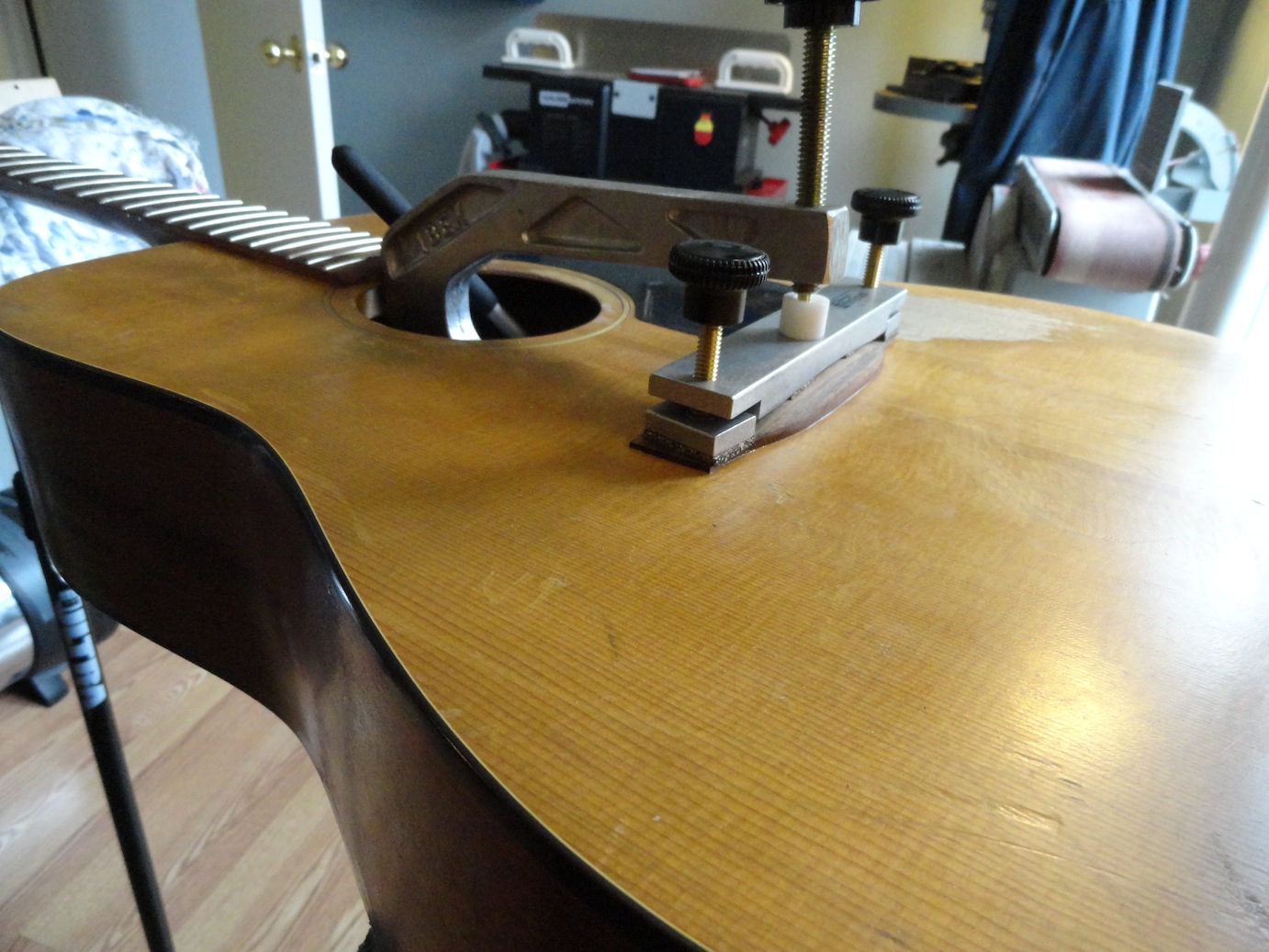 Here is a good shot of the bridge being re-glued. I make sue the alignment is the same by drilling two pilot holes under the saddle before removing it. Then, I know exactly where it has to go when ready for re-assembly, and I pin those pilot holed with tiny dowels.
Here is a good shot of the bridge being re-glued. I make sue the alignment is the same by drilling two pilot holes under the saddle before removing it. Then, I know exactly where it has to go when ready for re-assembly, and I pin those pilot holed with tiny dowels.
The last part of this job was glueing the headstock. It had obviously been dropped. Luckily, the heastock was still very much a part of the guitar, and I simply needed to glue it back together. This is done by prying the crack open, filling it with glue and then clamping it down. You have to control the adhesive when applying pressure, or it will spill all over the place. But all went well in the end.
